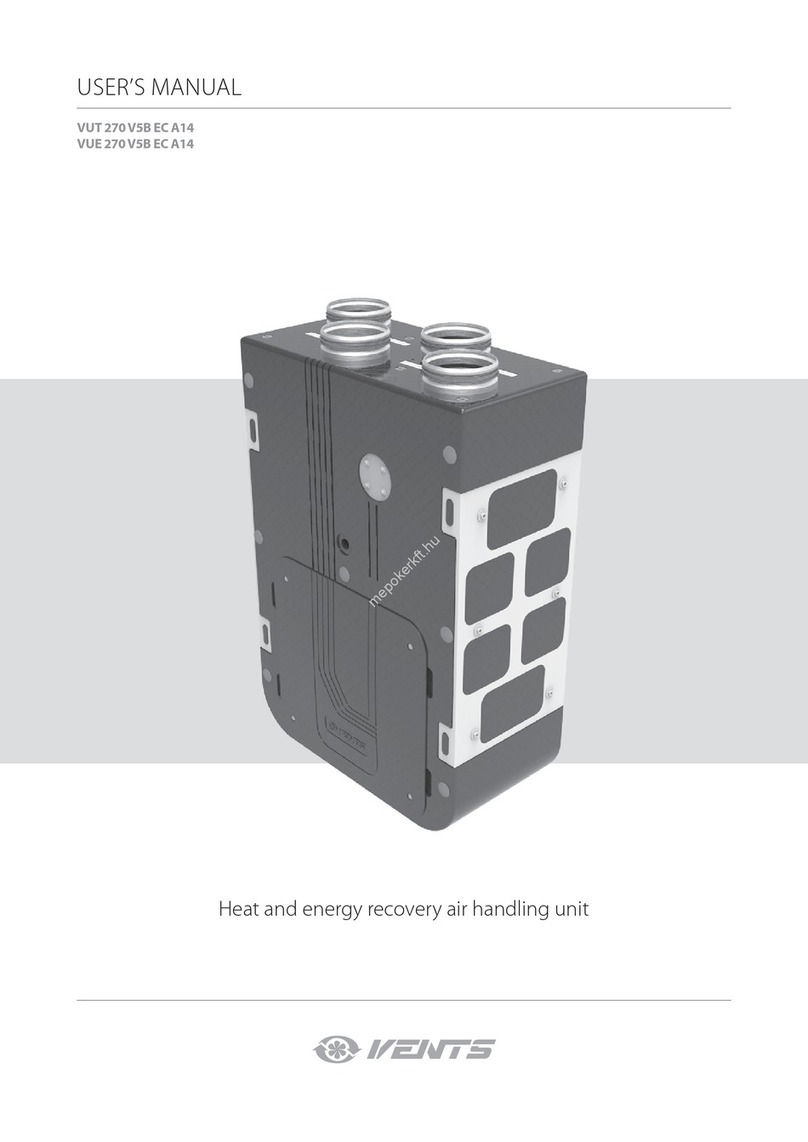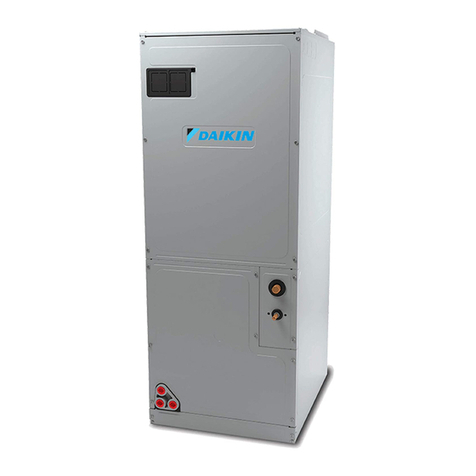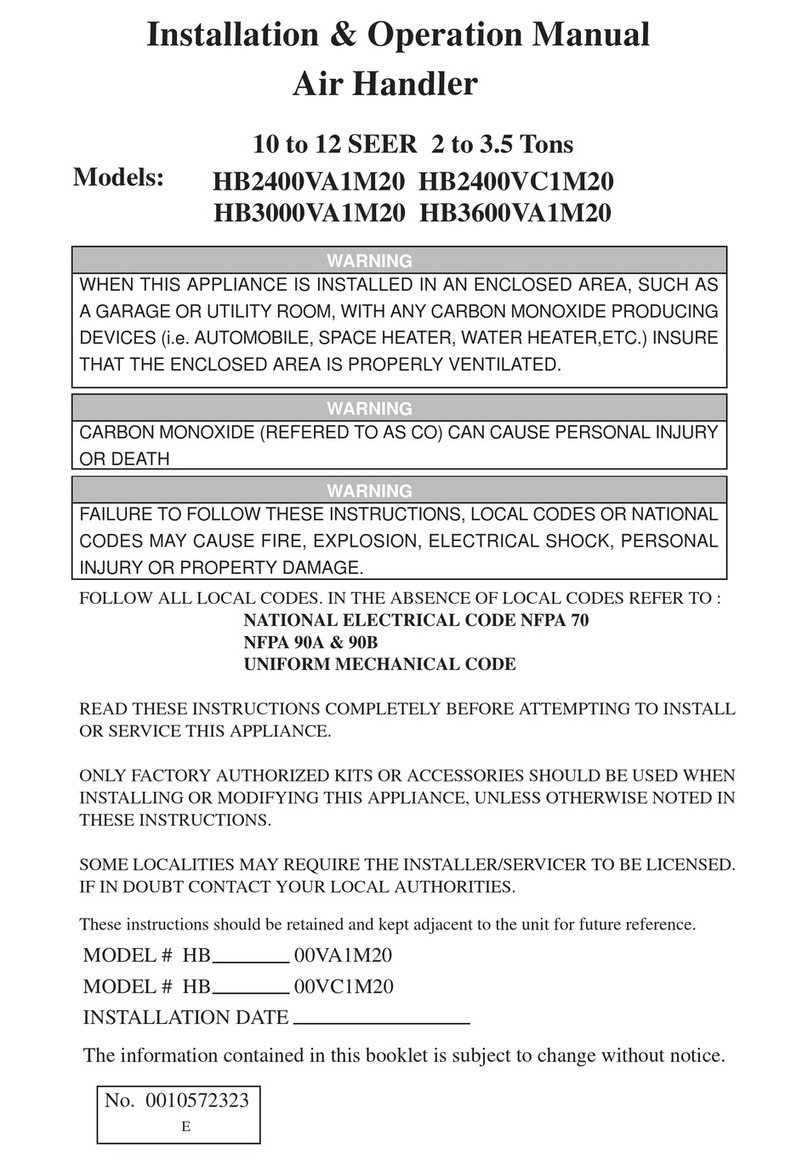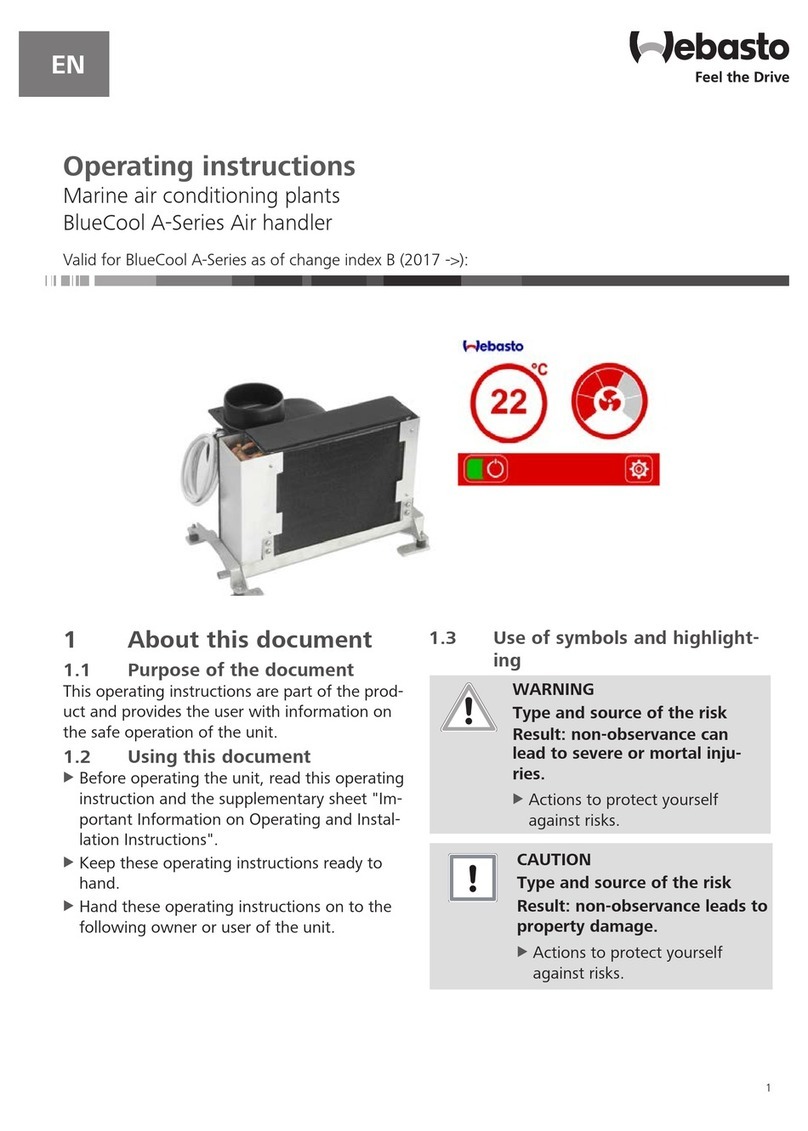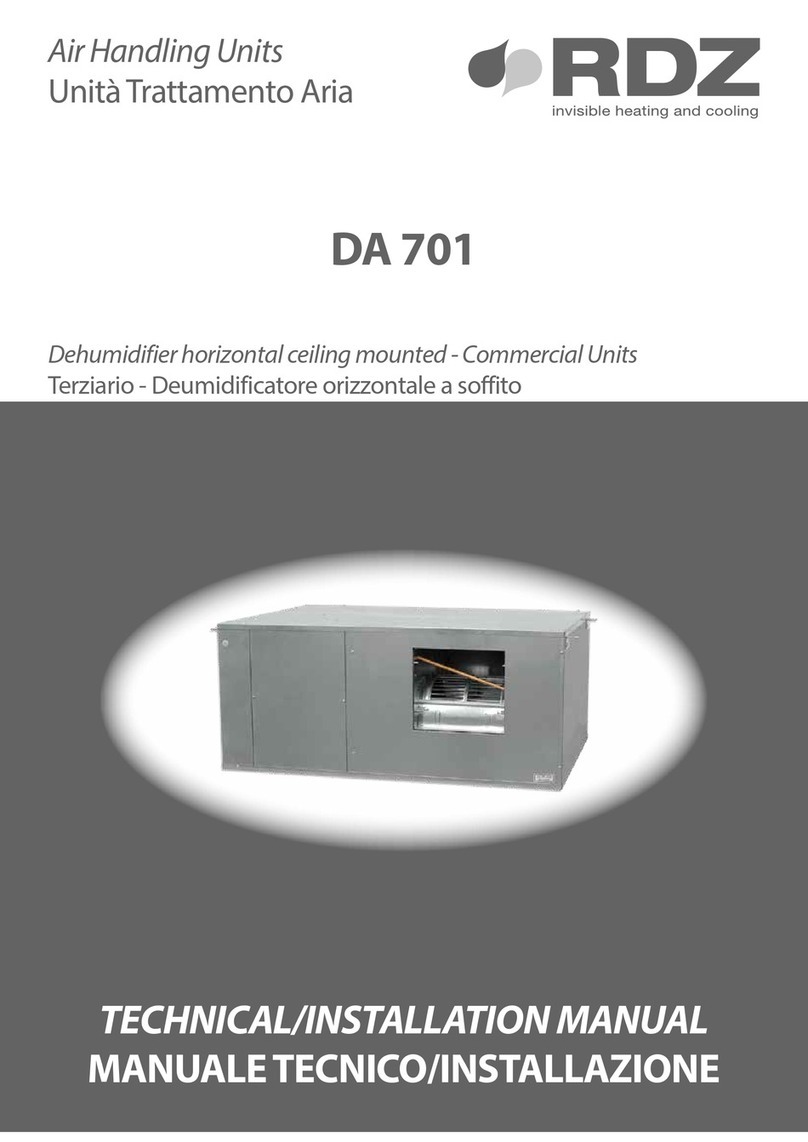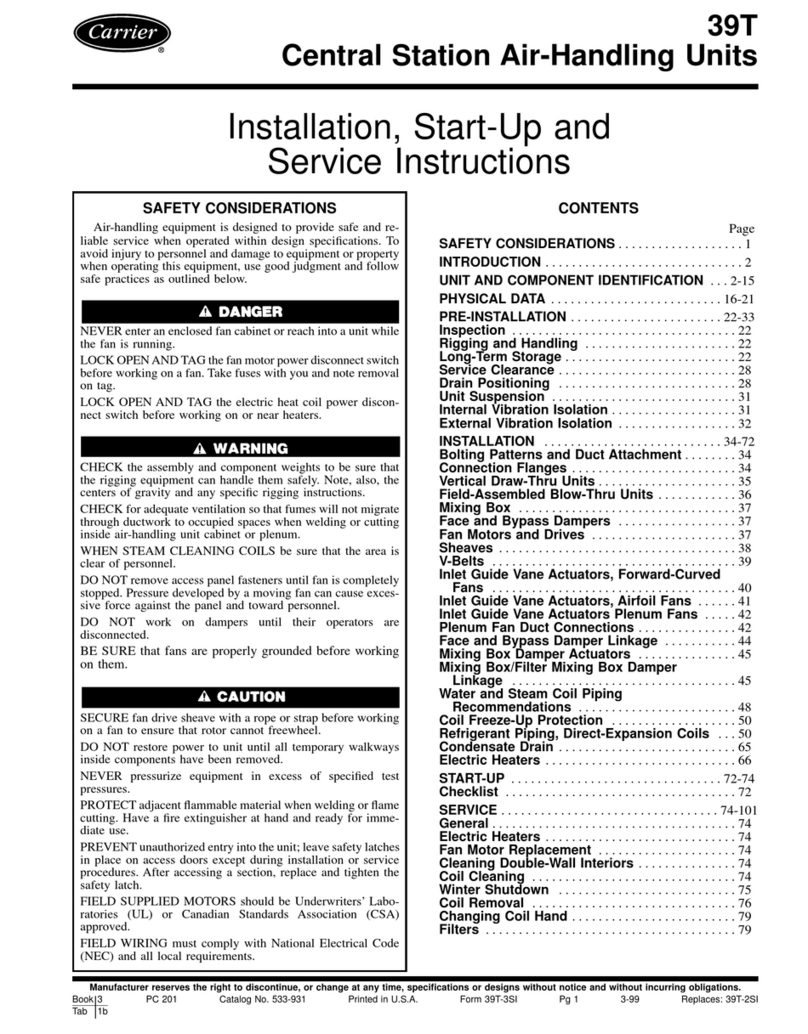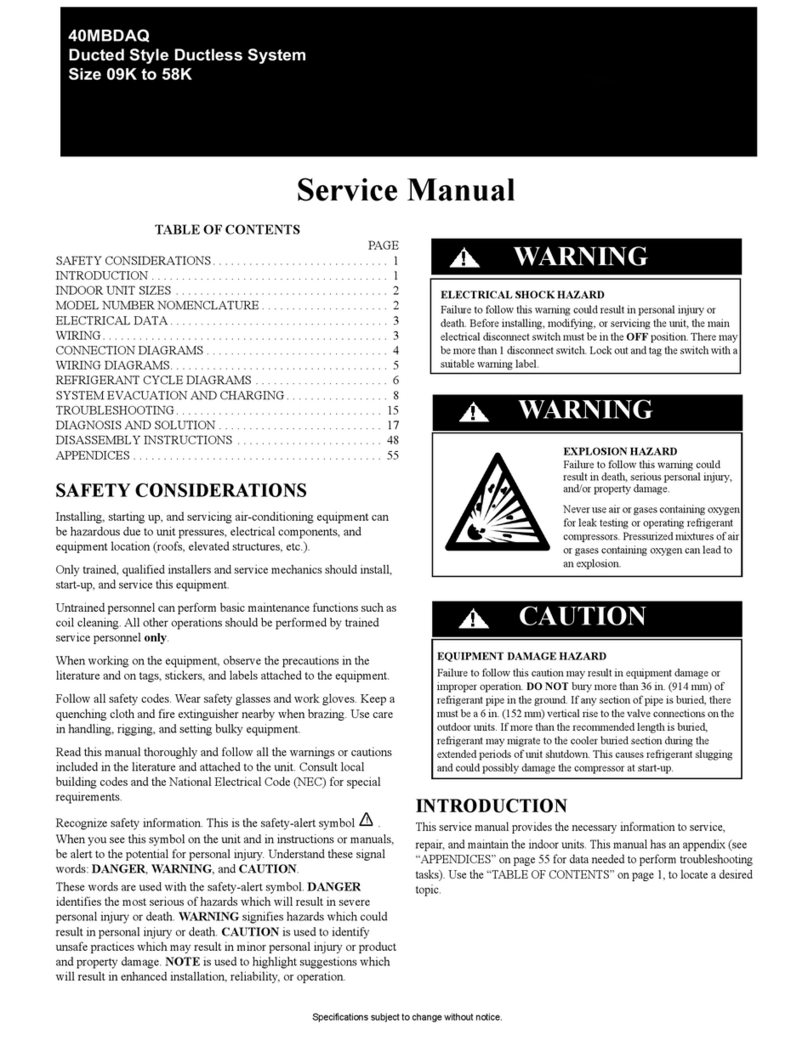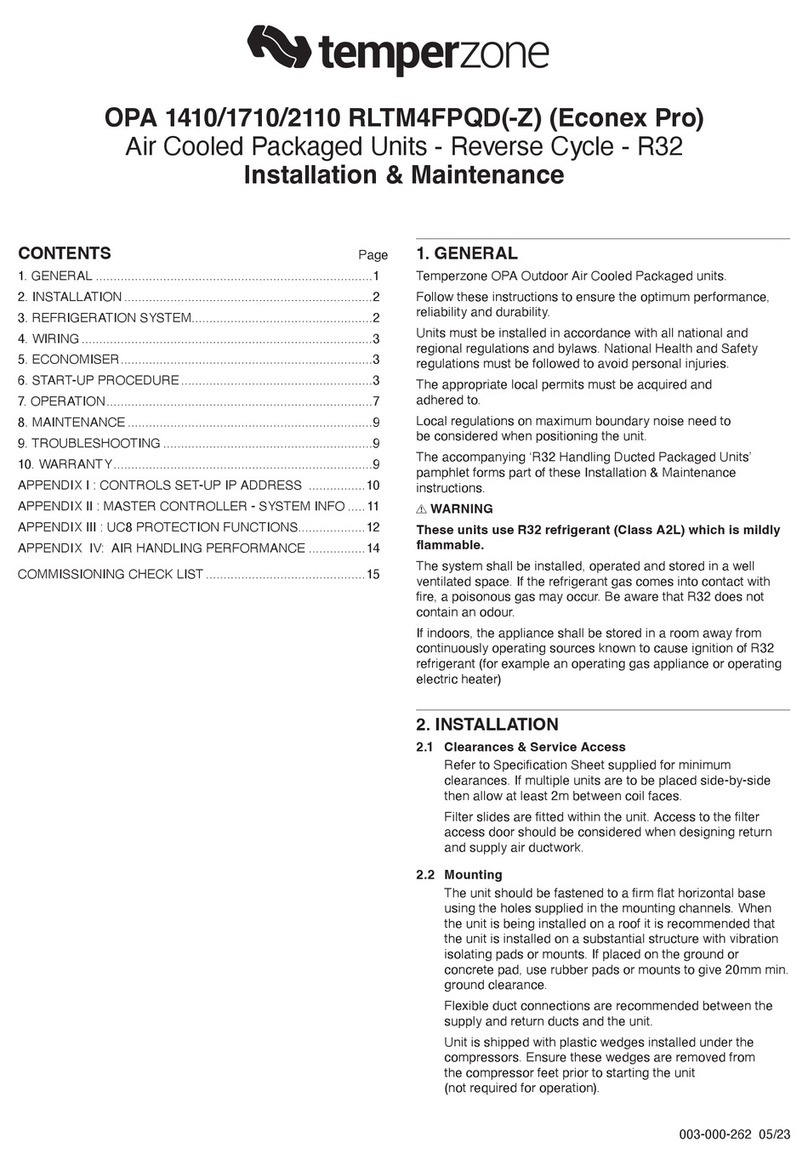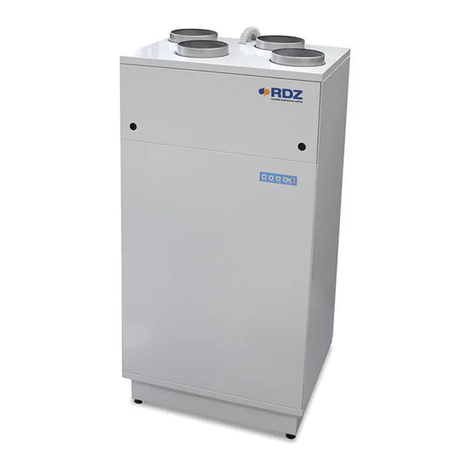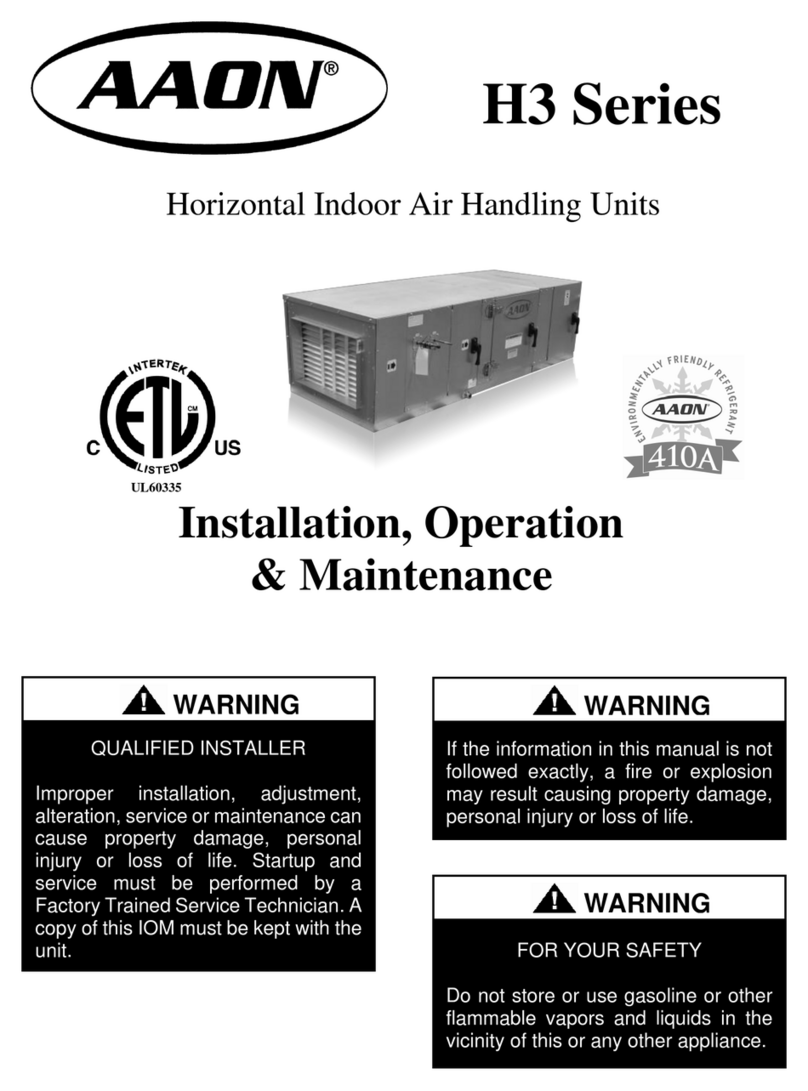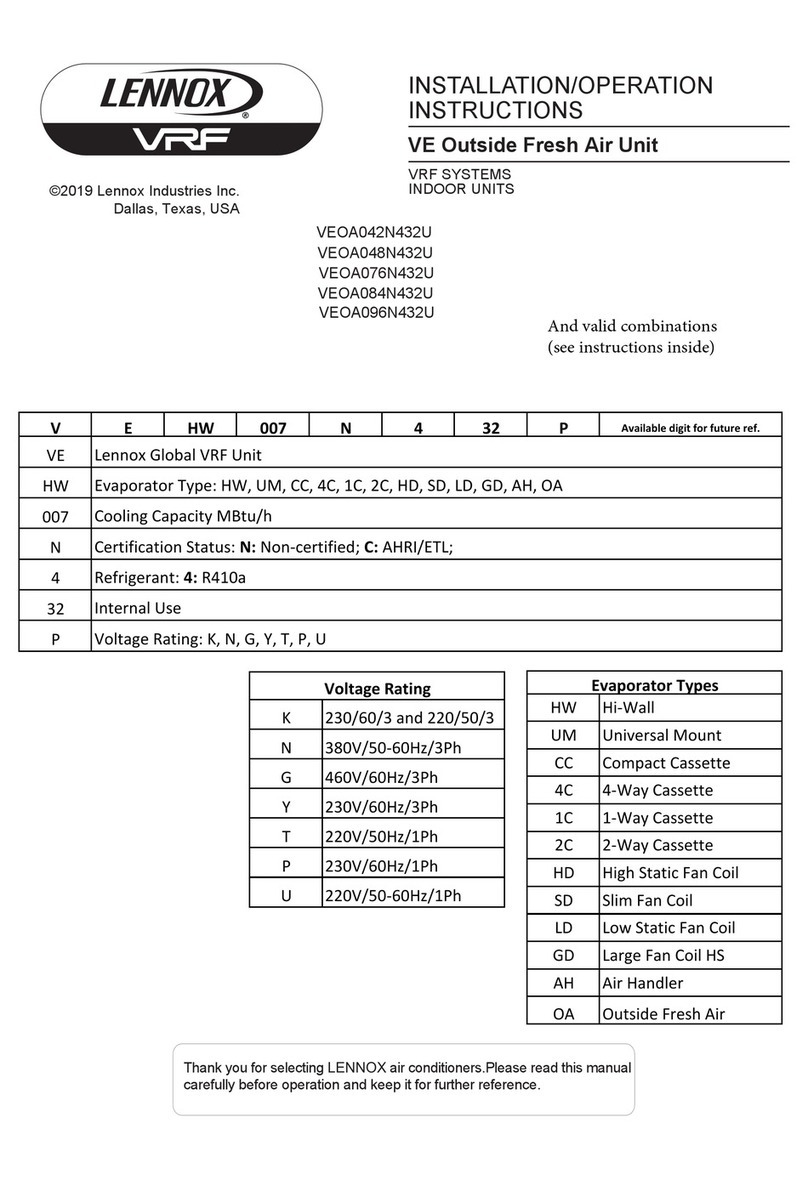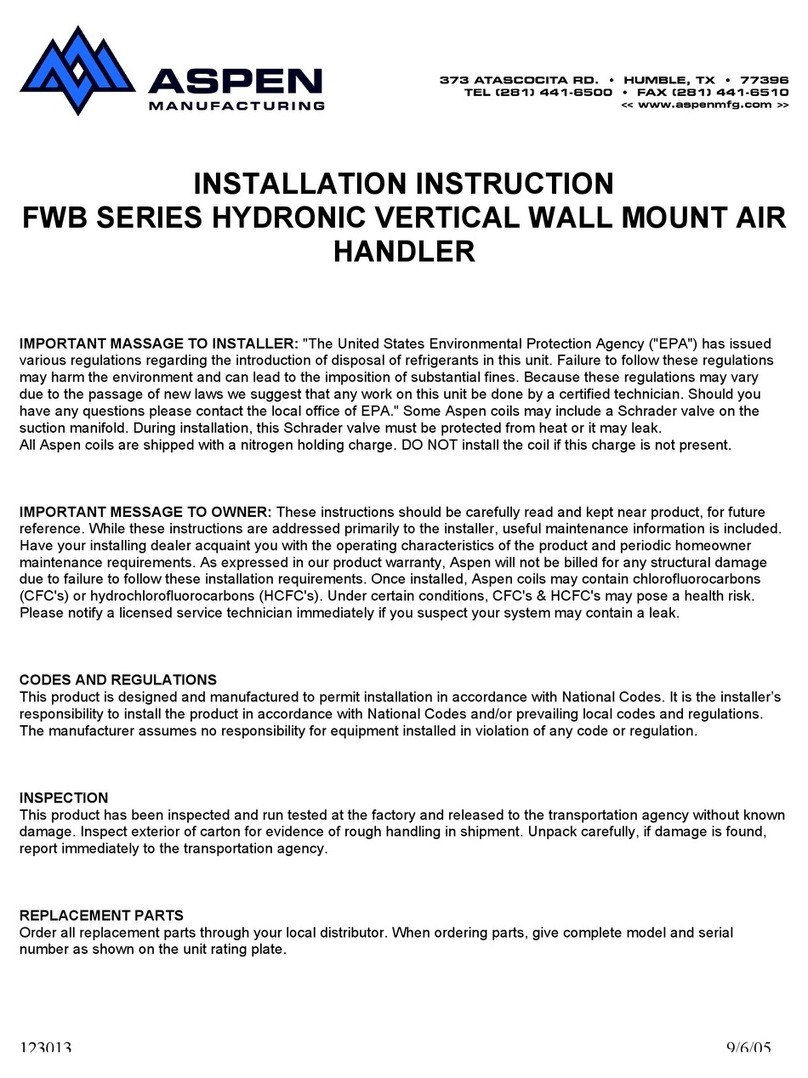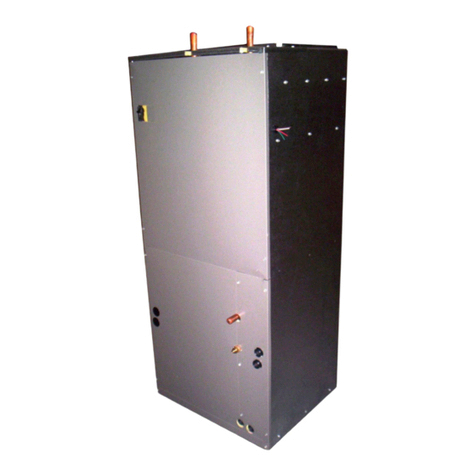
IO-123106 Effective 07/15/2015 3
4E. Ductwork
Duct systems should be installed in accordance with standards for
air-conditioning systems, National Fire Protection Association Pam-
phlet No. 90A or 90B. They should be sized in accordance with Na-
tional Environmental Sys-
tem Contractors Association
Manual K, or whichever is
applicable.
On any job, non-ammable
exible collars should be
used for the return air and
discharge connections to
prevent transmission of vi-
bration (Fig 4E-1). Although
these units have been spe-
cially designed for quiet
vibration-free operation,
air ducts can act as sound-
boards, can, if poorly in-
stalled, amplify the slightest
vibration to the annoyance
level.
All main supply and return air drops should be properly sized as
determined by the designer of the duct system and should not nec-
essarily be the size of the duct ange openings of the unit. (The
duct size should never be smaller than the ange openings of the air
handler supply and return air openings.)
A lter rack is provided for a 1”X20”X20” nominal size lter (Fig 4E-
4). Inspect and clean or replace iter every month. A blocked lter
can reduce air ow to the coil and hinder the performance of the
system.
If an accessory grill is being used, the front access panel should be
removed and discarded (Fig 4E-3).
These models have a bottom or front return. Discard the drain ac-
cess panel in the bottom of the unit if this is a bottom return applica-
tion (Fig 4E-2). In case of a front return application, the front access
panel should be removed and discarded.
It is recommended that wherever supply and return air sheet metal
ducts pass through unconditioned areas, they be insulated to pre-
vent excessive heat loss during heating operation. When applied in
conjunction with summer air conditioning, sheet metal duct routed
through unconditioned areas should be insulated and have an out-
side vapor barrier to prevent formation of condensation.
5. Installation
Ensure that the unit is adequately sized.
The tonnage of the outdoor unit should
never exceed the tonnage of this unit.
CAUTION
!
The coil was manufactured with a dry ni-
trogen pre-charge. Release the pressure
through the Schrader valve test port prior
to installation. If holding pressure is not present, return coil
to distributor for exchange.
!WARNING
Some Aspen coils may include a Schrader
valve on the suction manifold. Ensure that
the Schrader valve and valve core (where
present) are protected from heat during brazing and instal-
lation to prevent leakage. Use a core removal tool to tempo-
rarily remove the core when brazing. Replace the core once
brazing is completed.
CAUTION
!
Fig 4E-1.
Fig 4E-2.
Fig 4E-3.
Fig 4E-4.
the primary drain line is plugged and needs cleaning. If a second-
ary drain line will not be provided, plug the secondary drain. Drain
plugs are NOT to be reused without plumbers tape or putty. Drain
line connection should be nger tightened, then turned no more than
one complete turn as needed to ensure a rm connection. DO NOT
overtighten connection or damage may occur.
Insulation on the suction line MUST extend
into the cabinet and continue as far as
possible to eliminate condensate dripping
onto the access door.
CAUTION
!
ü Clean coil ns with degreasing agent or mild detergent and rinse
ns clean prior to installation.
üThe refrigerant line sizes should be selected according to the rec-
ommendations of the outdoor unit manufacturer.
üCare must be taken to ensure all connection joints are burr-free
and clean. Failure to do so may increase chances of a leak. It is
recommended to use a pipe cutter to remove the spun closed end of
the suction line.
üTo reduce air leakage, rubber gommets may be present where the
lines pass through the coil case. To avoid damage, remove grom-
mets prior to brazing by sliding over the lines. Use a quenching cloth
or allow the lines to cool before reinstalling the grommets.
üUse of wet rags/quenching cloth is highly recommended to prevent
weld-related damages to the casing and Schrader valve (if present).
